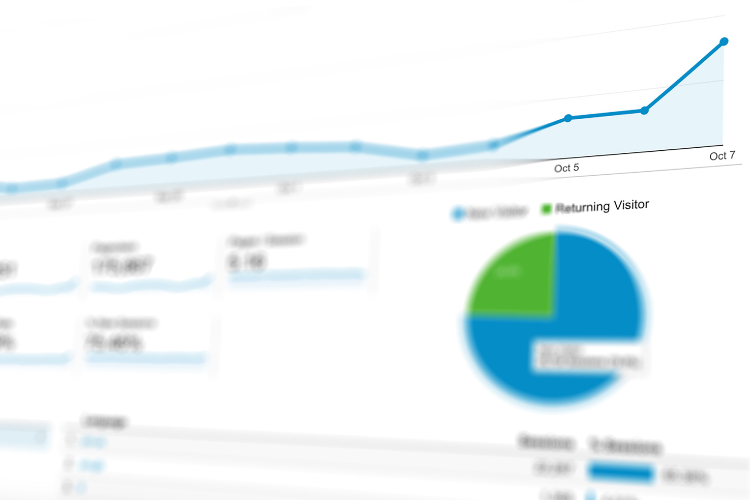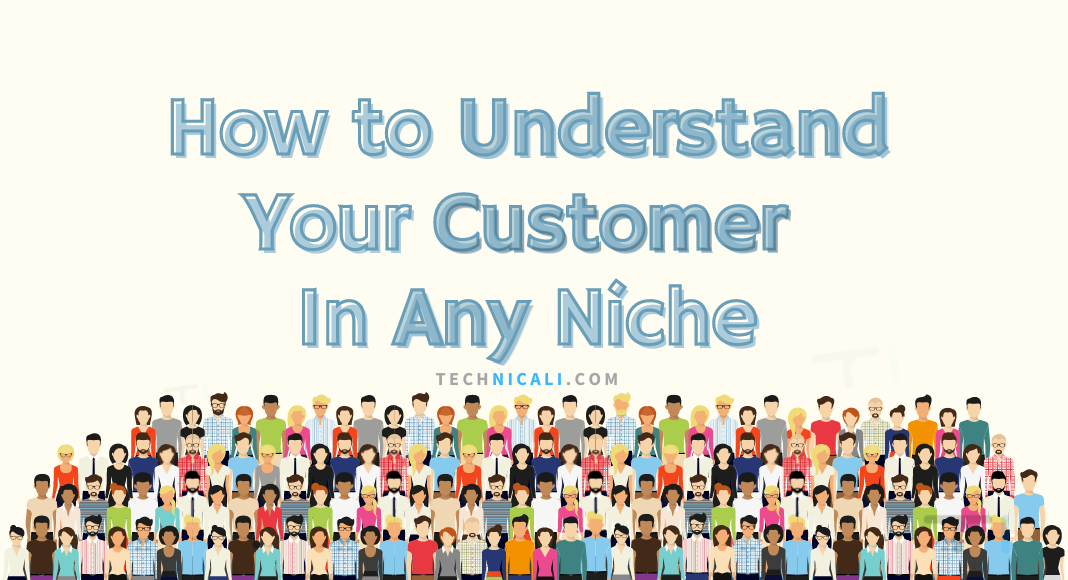As a marketer, you always want to be one step ahead of your competition. This means knowing your client inside and out, no matter your niche. Even if you’re starting from scratch or already have some customer data, there are ways to glean valuable insights into who they are, what they want, and how to best appeal to them.
However, acquiring this information can be difficult without first understanding the basics of marketing research. This guide will teach you everything you need to know about understanding your customers, including the importance of customer research, what metrics to use, and what tools and techniques are available to help you.
Contents
Why is it important to understand your customer?

Your customers are the bread and butter of your business. Without them, you wouldn’t have anyone to sell your product or service to. That’s why it’s so important to take the time to know your customer preferences. The better you understand them, the better you will be to appeal to their needs and wants. Additionally, understanding your customer base will allow you to target your marketing efforts more effectively, which can lead to increased sales and ROI.
Importance of “Needs” and How it differs from “Wants”
Understanding customer needs is important for businesses because it allows them to create products and services that appeal to their target market. Needs are the underlying reasons why people want something, while wants are the specific things people want.
An example of the difference between “needs” and “wants” can be seen in the automotive industry. People need transportation in order to get from one place to another, but they may want a luxury car with all the bells and whistles. The need for transportation is what drives people to buy cars, while the want for a luxury car is what motivates them to buy certain brands or models.

Businesses need to understand the difference between needs and wants because they can use this information to create more effective marketing plans and campaigns. If a company can identify the needs of its target market, it can create products and services that meet those needs. This is likely more successful than trying to sell products that only meet people’s wants, which may not be as relevant or important to them.
Because of the competitive landscape and the fast pace of innovation in SaaS, understanding needs becomes one of the most important aspects of any SaaS company to deliver a great customer experience, have a low churn rate, and attract new customers. In many cases, customers will not even be aware of what their needs are; with changes in market trends, the customer journey needs to be adjusted. So it is up to the company to understand them and design their product or service accordingly. This involves doing extensive market research into the industry and the specific niche that the company is targeting. It is also important to continue gathering feedback from customers once the product or service has been released to ensure that they continue to meet their needs and get more business relationships.
While Wants are also important for a SaaS company, they should not be the main focus as they often don’t tell the whole story of what clients are looking for. It is more important to understand why they want it and how that ties into their needs. For example, a customer may want a certain feature for their software because it will make their job easier, but that does not mean they need it. Understanding the difference between needs and wants is essential for creating a successful product or service.
How to Gather and Analyze Customer Data

When starting out, a SaaS company needs to gather customer data to develop its product. This data can include feedback on what features customers want, what problems they are trying to solve, and what other solutions they are considering. These data points can also help to inform the company’s marketing strategy and target market.
Best Ways of Knowing Your Client for a Successful Business
There are several different ways to gather customer data to develop and improve your product.
Here are some of the most effective methods:
Online Surveys:

Online surveys are a great way of customer analytics to gather and understand their needs and wants better. You can target a specific audience using online surveys and ask them questions about your product or service. This will help you gather feedback and create products or services that address the needs and wants of your customers.
By administering surveys, a brand can measure certain aspects of customer behavior, including what features or services they are drawn to, their interests, and how they feel about your product or service. These provide an easily accessible platform for customers to voice their opinions, allowing companies to better assess customer sentiment and make changes accordingly.
Several different online survey tools are available, so you can find one that fits your needs. If you are one of the small business owners, you can simply use Google Forms. If you are a big business and want various features, you can use tools like Survey Monkey and Typeform. These allow you to create surveys and collect responses directly online. You can also find survey templates to help you get started.
Once you have created your survey, you can promote it through social media, embed surveys on your website, or send them through email marketing or paid advertising.
Spying:

Spy tools like Spyfu, Buzzsumo, Semrush, and Ahrefs can help companies gather customer data to understand their needs and want better. The tools track what people say about the competitor company and product online. This information can help companies understand what features or services customers want.
It is important to understand the important metrics to get started with spy tools. These metrics can vary depending on the tool but typically include things like:
- where they are getting the most traffic
- what authority websites are linking to them
- what are their content marketing efforts look like
- who are their sponsors
- who are their existing customer
- what their customers are saying
- what keywords are they ranking for
- what paid keywords are they bidding for
Companies can use this data to know their customers, improve products, and engage the audience to create a better customer experience.
Analytics:

Another way to gather data is through advanced analytics tools such as Google Analytics, Microsoft Clarity, Ahrefs, SemRush, and HubSpot CRM. These tools can help track how users interact with the product and where they drop off. Though it requires you to have a property(app, website) with existing customers that are generating traffic.
Like Google Analytics, some important metrics include pageviews, unique pageviews, session duration, and bounce rate. This data can help you understand how your customers are interacting with your website, what features they are browsing more, what services are getting more clicks, what page can improve if they tend to quickly bounce off, and overall how you can improve your product to better meet their needs.
One of the most important metrics to track in Google Analytics is Acquisition. This gives detailed information on where your traffic is coming from – organic search, paid search, social media, etc. Knowing where your traffic is coming from helps you focus your content marketing efforts on the digital channels that are delivering the best results.
Another valuable metric to track is Behavioral Data. This tells you what people are doing when they visit your site. Are they spending a lot of time on the page? Are they clicking on links to other pages on your site? Knowing what people are doing when they visit your site can give you a competitive advantage and help you improve customer experience, and keep them engaged longer.

In Microsoft Clarity, you can know your customer when they get to your website; you can see how long they stay on each page, where they click, and how they interact with your site. With their data analysis heatmap, one can understand what parts of your website are most popular and which need improvement.
For example, if you see your traffic leaving your website after clicking on a certain link, you might want to investigate why that is happening and make changes to the page. This data can help you understand if your website provides a good user experience and where you can improve.

With HubSpot CRM, you gather and analyze lead data to better understand the customer journey and needs. It offers features like workflow automation, customization, third-party integration, customer service, and employee tracking. These features can help you track important metrics like customer churn, customer lifetime value, customer loyalty, and customer engagement.
With Analytics Spy Tools like Ahrefs/SemRush can also help you track your website stats, things like referring domains, organic traffic, and backlinks, which can tell you just about the same as your competitors.
However, this time in order to use the Analytics tools mentioned above, you first need to have some traffic to your property so that you can gather accurate data.
Manual Research:

The manual approach to understanding an audience is a great way to understand who your audience is, what they want, and how they interact with your product or service. It involves looking at your competitor’s social media, using niche forums, Twitter Hashtags, and Reddit/SubReddits to see what clients are discussing, and figuring the audience from there itself. Any company saas or non-saas can use a manual approach. This is a very good way to get audience data, but it requires a lot of work.
Looking at social media platforms like Facebook, Instagram, Twitter and Reddit can give a company a good understanding of the conversation around their product or service. Niche forums and online communities can also be a great resource for understanding customer needs and wants. By spending time interacting with these communities, companies can get a sense of the types of people who are interested in their product, what offers they respond to, what they hate, and how they are currently interacting with it.
This information can help companies better target their marketing efforts and develop a product that aligns with millennials’ wants. However, this is time-consuming, and it’s not always possible to access all the customer information you need from it. It’s always a good idea to use a manual approach along with other methods, like spy tools, analytics, and online surveys. This will give you the most accurate picture of your audience and how they interact with your product.
MVP and MAP:

Minimum Viable Product (MVP) and Minimum Awesome Product (MAP) are two terms used in the Lean Development Methodology. MVP is a product that customers will call “minimum,” meaning it has the fewest features possible. On the other hand, MAP is a product that customers will call “awesome,” meaning it exceeds their expectations.
Creating an MVP/MAP can help you understand the type of audience you are targeting and their needs. For example, if you are developing a new SaaS product, you can create an MVP to test your idea and see how your clients/audience react. After their feedback, you can then improve your products and add features that your audience actually needs. However, this approach can be expensive for small teams if not done correctly. It is important to remember that MVP should have only the minimum set of features needed, but they should be built and designed to the best standard. Concepts like MVP, MAP, or MLP (Minimum Lovable Products) will come and go, but having an understanding of your customers is always important.
How to Analyze this Data to Create Customer Personas

1. Collect data about your customers
There are a variety of different ways to collect data about your customers. The most common methods are online surveys, spy tools, analytics, manual, and MVP, as discussed above. This data can include demographic information, online behavior, purchase history, and feedback from surveys and customer interviews.
2. Analyze your customer needs
Once you have collected this data, the next step is to analyze it and identify patterns. This will help you create customer personas representative of your target market. Like what type of language they commonly use, what loyalty programs they respond to, their needs, and how they want their business relationship.
3. Create customer personas
Once you have determined the needs of your target customers, you need to create customer personas. Buyer personas are semi-fictional representations of your definitive customers based on data and research. You can begin to create personas that represent them. These personas should include information such as age, gender, occupation, interests, and needs. You can also create negative personas to help you understand what type of customer you don’t want to target.
Once you have created customer personas, you can use them to guide all aspects of your business, from product development to marketing to sales. Personas help you focus your time and resources on attracting high-value customers who are most likely interested in what you offer. They also help you create products and marketing messages that appeal to your target audience and keep customers engaged.
4. Use buyer personas to attract high-value visitors, leads, and repeat business
As a result of creating buyer personas, you will be able to know what customers buy and attract high-value visitors, leads, and clients to your business who are more likely to convert into repeat business consumers. You can use personas to create targeted content that appeals to their specific needs and interests. You can also use them to create targeted marketing campaigns that reach your ideal customers where they are spending their time online.
Conclusion
By using the tips and techniques discussed in this article, you will be well on your way to understanding your customers better than your competition. Marketing research is essential for understanding your customers, no matter your niche. Using the right metrics and tools gives you valuable insights into who they are, what they want, and how to best appeal to them.
However, as customer needs become increasingly sophisticated, it’s becoming more difficult to keep up.
Tools like customer relationship management (CRM) software can help to make this process less daunting. Still, for the future of any business, it’s important to stay up-to-date on the latest trends and technologies in order to keep your business ahead of the curve.


